Malta Travel Guide
Malta Travel Tips: The Best Guide to Exploring MaltaThis article may contain affiliate links and at no additional cost to you, we earn a commission if you make a purchase. Also, as an Amazon Associate, we earn from qualifying purchases. For full information, please see our disclaimer.
Still, trying to figure out your next travel destination? I present to you Malta. Home to picturesque beaches, stunning coastlines, plenty of fantastic diving spots, delicious Mediterranean food, and a rich cultural heritage, Malta is a place that has something for everyone. Whether you want to explore its vibrant culture, relax on the beach, or party all night, the choice is yours. But what truly sets Malta apart is its unique experiences, from exploring ancient cities to diving in crystal-clear waters. Malta has quickly become one of my favorite holiday destinations. After traveling and living in Malta since 2019, I’ve crafted this ultimate Malta travel guide, packed with travel tips on what to see, do, and eat in Malta.
Malta Travel Guide: Quick Information
The Capital of Malta – Valletta
Valletta is Malta’s most important city and capital. It is located in the South Eastern Region and offers beautiful sea views. Known for its Baroque, Neo-Classical, and Modern architecture, Valletta is a UNESCO World Heritage Site and a must-visit. The city is one of the smallest capitals in Europe, so you can easily walk through it and see the beautiful sightseeing points. The unique blend of architectural styles will surely inspire your wanderlust. I have prepared a short blog post with the best things to do in Valletta for your convenience.
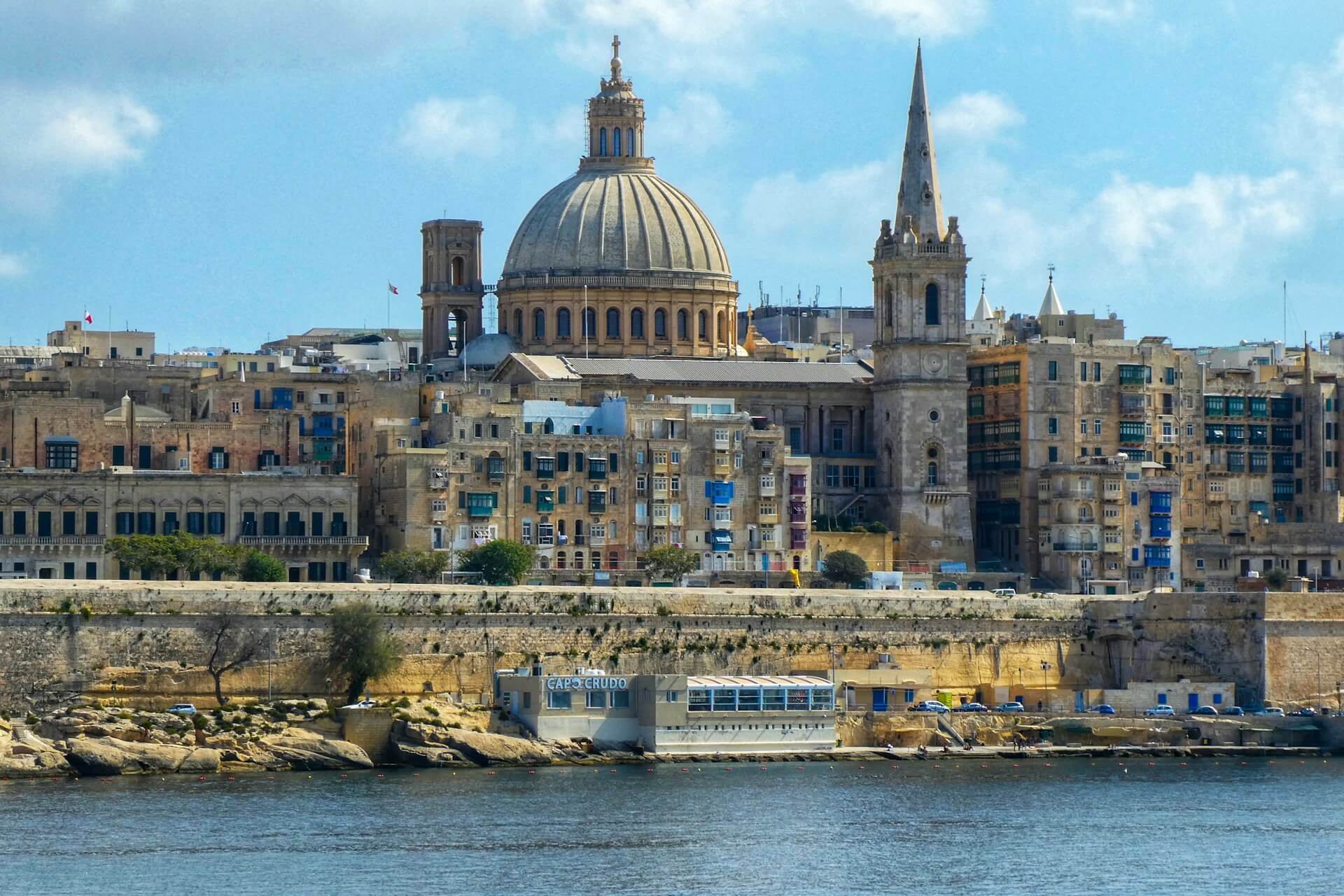
Language
Malta has two official languages: Maltese and English. Maltese, a Semitic language with many Latin-derived words, offers a fascinating mix of Arabic, English, and Italian influences. English is also widely spoken due to Malta’s history as a British possession until 1964. The widespread use of English will make your travel experience in Malta more comfortable and enjoyable, ensuring you feel at ease and able to communicate effectively during your visit. If you can speak Italian, you can find many people with whom to practice it as well.
Religion in Malta
Catholicism is the predominant religion in Malta, with over 95% of the population identifying as Catholic. The archipelago boasts around 360 churches, making it one of the world’s most Catholic countries. Throughout the year, Malta hosts numerous religious festivals and grand celebrations that you can attend. It is really a great experience.
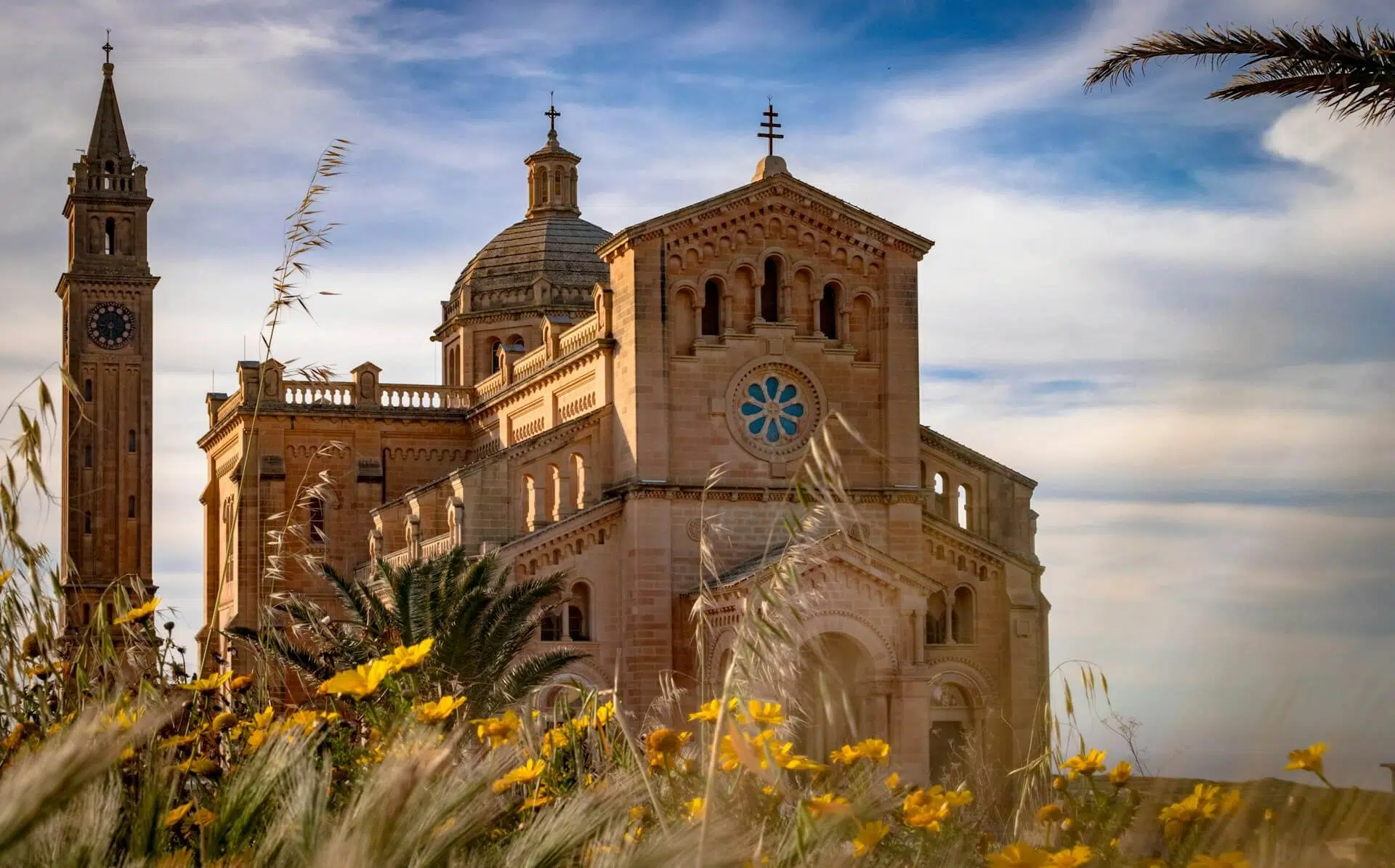
Currency
Malta’s currency is the Euro. Banks are open until early afternoon Monday through Friday and until midday on Saturday. International bank cards, including Visa, American Express, Revolut, Diner’s Club, and Mastercard, are widely accepted.
Electricity Socket
Malta uses a 220-230V AC electricity supply with type G power outlets. If your country’s standard voltage is 220-240V (like in the UK, Europe, Australia, most of Asia, and Africa), you can use your electronic devices without issue. However, if your country’s standard voltage is 100-127V (such as in the US, Canada, and most South American countries), you’ll need a voltage converter. A universal travel adaptor is also recommended.
Malta Visa
If you are from a country member of the Schengen Area, you can freely travel within the whole Schengen Zone. If you are traveling to Malta, you will need a Schengen Visa if you are a citizen of a non-Schengen country without a visa-free travel agreement with the area or if you have been refused visa-free travel. For more information, you can check the Identity Malta Agency website.
History of Malta
Malta has a long history, beginning about 6000 BC. Despite being so isolated, civilizations have flourished in Malta for thousands of years. The Greeks, Romans, Byzantines, Normans, Sicilians, and British have left parts of their culture in the island’s history. Here, you can find the Megalithic Temples, which are among the world’s oldest surviving buildings (3850 BC).
The rule of the Order of Saint John (16th century) was characterized by art, architecture, and overall improvement. If you are interested in their history, read more about the order commonly known as the Knights Hospitaller, the Knights of Malta, and the Order of Malta. They still exist and have sovereign rights and a headquarters in Rome, Italy. In addition, if you are unfamiliar with the Maltese cross, you can also check what it looks like (an essential part of the heraldic and phaleristics).
In the 19th century, Malta became a colony and an important naval base for the British. Since 1964, Malta has been independent from British rule and became a republic in 1974. Since 2004, Malta has been a member of the European Union, so EU members can easily travel to the country.
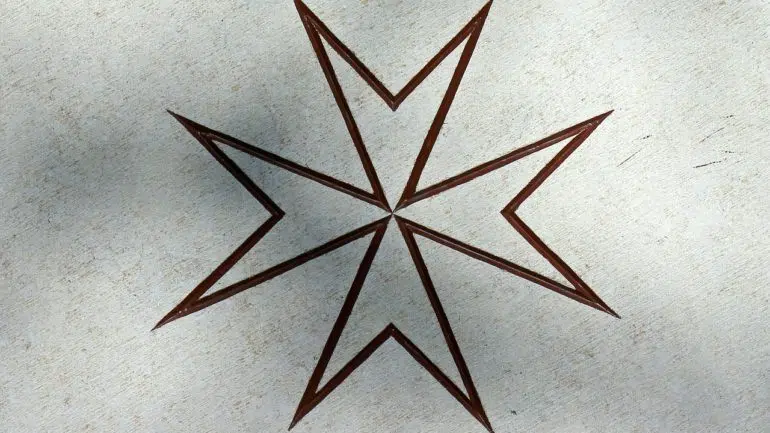
Safety and Insurance
Yes, there are some scams here (as everywhere else), but Malta is generally safe. Here are some of my Malta travel tips.
As a tourist, you should be careful with your belongings, especially in hotspots such as Paceville or Bugibba, to avoid pick-pocketing (which is actually rare in Malta). Be cautious in the nightlife areas to prevent violence and stay safe (mainly in the party center Paceville). Always be aware of your surroundings and take necessary precautions.
Driving in Malta requires extra care due to left-side driving, numerous inexperienced foreign drivers, and a tendency for speeding, which can lead to traffic accidents. But don’t let this stop you from exploring Malta by car. It’s definitely the best way to see the island. Just be careful. And, of course, only travel with insurance.
Malta Trip Planning
In my Malta travel guide, I also included some main points to consider when planning your trip to Malta.
Weather
If you want to explore the island, the best time to visit is spring or autumn. If you decide to spend your summer holiday here, avoid the high season in July and August. It is scorching and full of tourists (unless this is what you are searching for). While you can visit Malta all year round, avoiding the winter season might be wise.
In a nutshell, the weather in Malta is warm. You can wear a T-shirt or light jacket and shorts during the daytime of March and November. It usually rains once or twice throughout the season from June to September. The maximum temperatures in summer reach 35-40°C (95° Fahrenheit) and 25-28°C at night. On the other hand, the winter is short, and actually, it is not a real winter with temperatures over 10-15°C. In other words, Malta is a perfect place to spend the winter months (especially if you come from a cold northern country).
Transport
There are plenty of options offering direct flights to Malta, especially from airports within or close to Europe – WizzAir, AirMalta, Alitalia, EasyJet, and many more. On the island, transport from one place to the next is relatively easy and very efficient. You can use the well-organized public transport if you want to travel cheaper. You can also use transport companies such as Bolt and eCabs and travel cheaper than with taxis. You only need to download their apps.
If you prefer your own kind of transportation, renting a car can help you discover every part of this beautiful island. But to visit Gozo or Comino, you should travel by ferry – around 25 minutes from Cirkewwa and 45 minutes from Valletta. In this Malta travel guide, I want to mention the main transport options, but if you are still wondering how to get around Malta, check out my article about it.
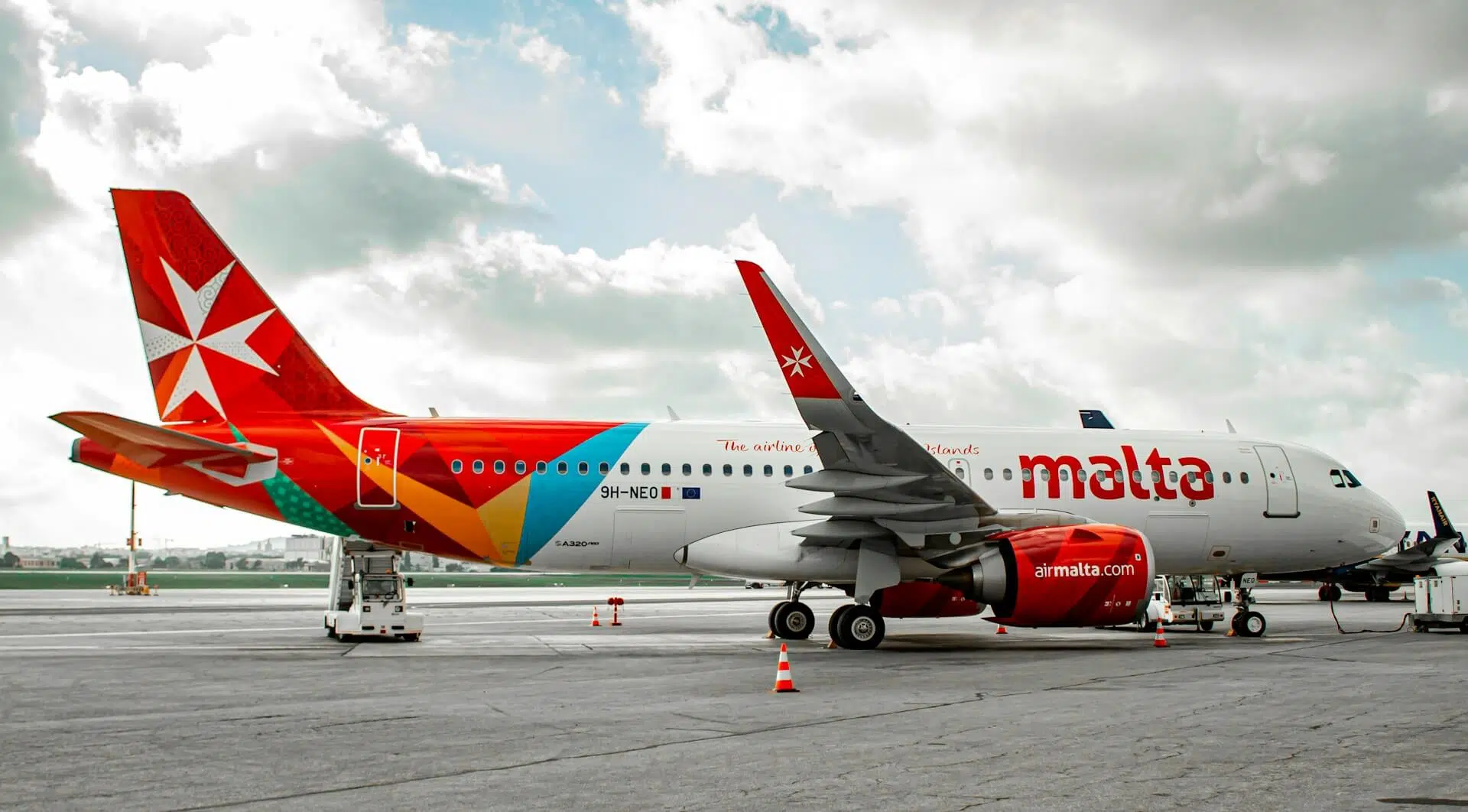
Budget
It depends on you and your wishes. You can spend your holiday around for as cheap or as expensive as you want. My experience shows you can travel to Malta for about 70-90 EUR daily. These costs include accommodation, food, and activities, which are your most considerable expenses when planning a trip to Malta. But you can do this much cheaper if you are on a budget. Or if you prefer staying in hotels and eating out in restaurants, you can expect this to be higher. For example, food is not so cheap. If you eat local street food, you can get a pastizzi (read more about the local food in Malta below) for less than a euro or the famous ftira for about 3 EUR. But eating in restaurants is more expensive, 15-20 EUR for a single dish.
What to Pack for Traveling to Malta
Traveling around Malta is generally easy, except for a few colder months (November – February). In winter or if you want to go to the countryside, take closed shoes, a light jacket, and an umbrella. The sun shines every season—cold or hot—and you don’t want to go on outdoor activities without sunglasses and a hat.
As a quick overview, here are some of my must-bring items while traveling:
– a portable water filter bottle so I always have something to drink on hot days;
– a sand-free beach blanket because in Malta, there are beautiful beaches you would like to visit;
– a good pair of travel shoes for my journey.
Bringing a light power bank with you might be a good idea, especially if you take hundreds of photos and reels for your Instagram and TikTok. Be sure to pack some food and water if you go outside the cities, too.
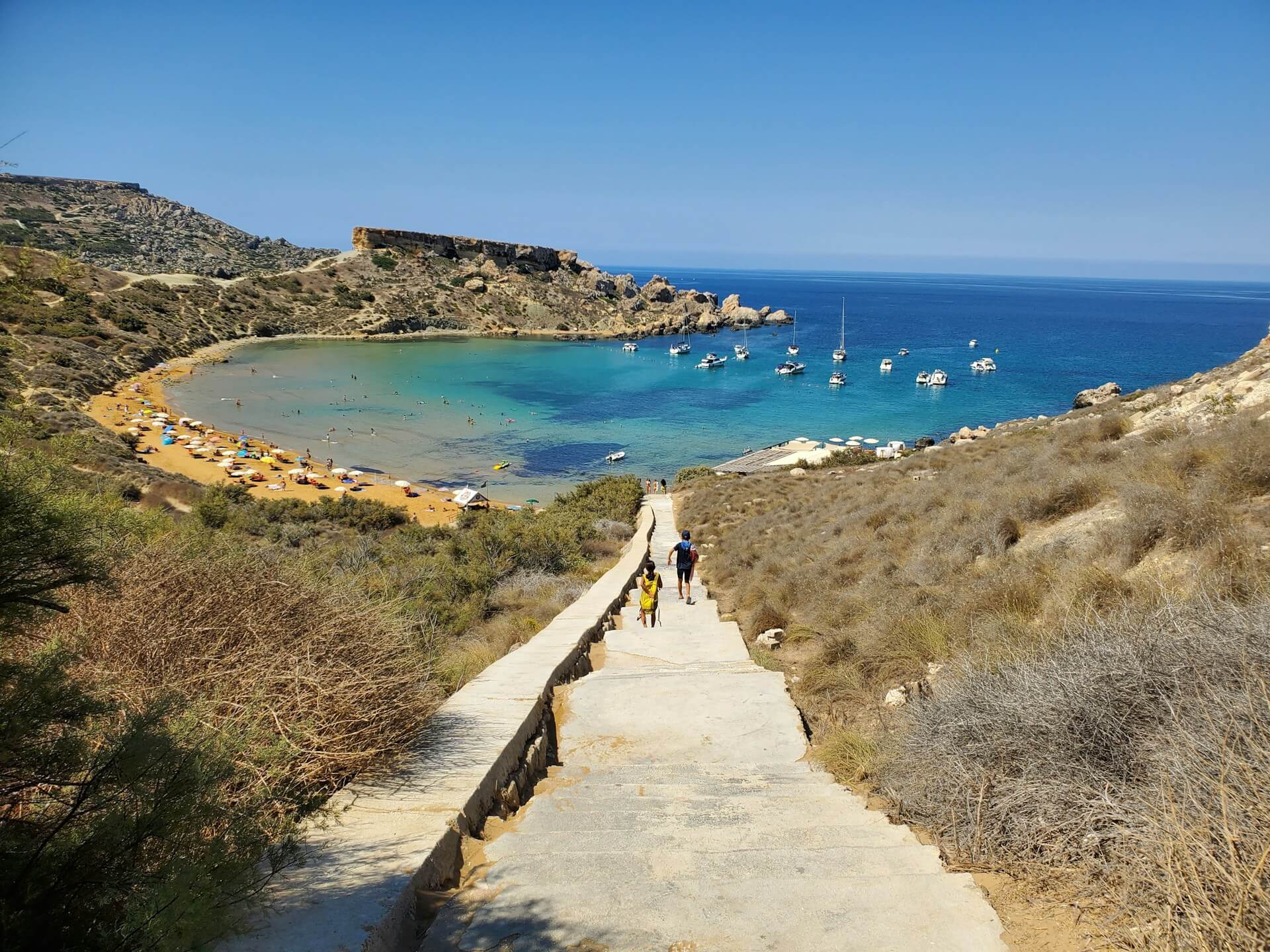
Malta Travel Tips: The Best Things to Do
Top Attractions in Malta
Let’s see now what Malta is famous for. As mentioned, Malta has a little bit of everything for everyone. Touring the towns by foot will provide stunning views, from the Mediterranean’s dramatic cliff-edge views to lush green valleys with prehistoric ruins and ancient cave chapels. The towns are small and compact, and you can easily explore them by walking and feeling the local atmosphere – this is one of my favorite things about Malta. And don’t forget to take lots of photos – to show them to your friends who can’t travel to Malta or just to make them jealous.
Below are my recommendations on the best things to do in Malta.
Get Lost in Valletta
Let’s begin the top attractions in this Malta travel guide with the capital city. Valletta, The Fortress City, “A city built by gentlemen for gentlemen,” Citta’ Umilissima – these are some of the names given to Malta’s capital. This impressive fortress city grew on the rock of Mount Sciberras peninsula, near the harbors Marsamxett and Grand Harbor. There are temples, ancient buildings, museums, restaurants, shopping areas, and attractions that bring different cultures together. If you want to explore the city, you can take this guided city walking tour and explore the sights of Valletta.
PS: Just remember… actually, you can’t get lost in Valletta – all roads lead to the sea!
Explore the Rest of Malta
After Valletta, head to the beaches in northern Malta to relax and swim in crystal-clear waters. History enthusiasts can visit the ancient cities of Mdina and Rabat. Enjoy delicious seafood in the southern fishing village of Marsaxlokk while taking in the sea views. For nightlife, St. Julian’s and Paceville are the go-to spots. Don’t miss the hidden gem of Ta’ Xbiex as well.
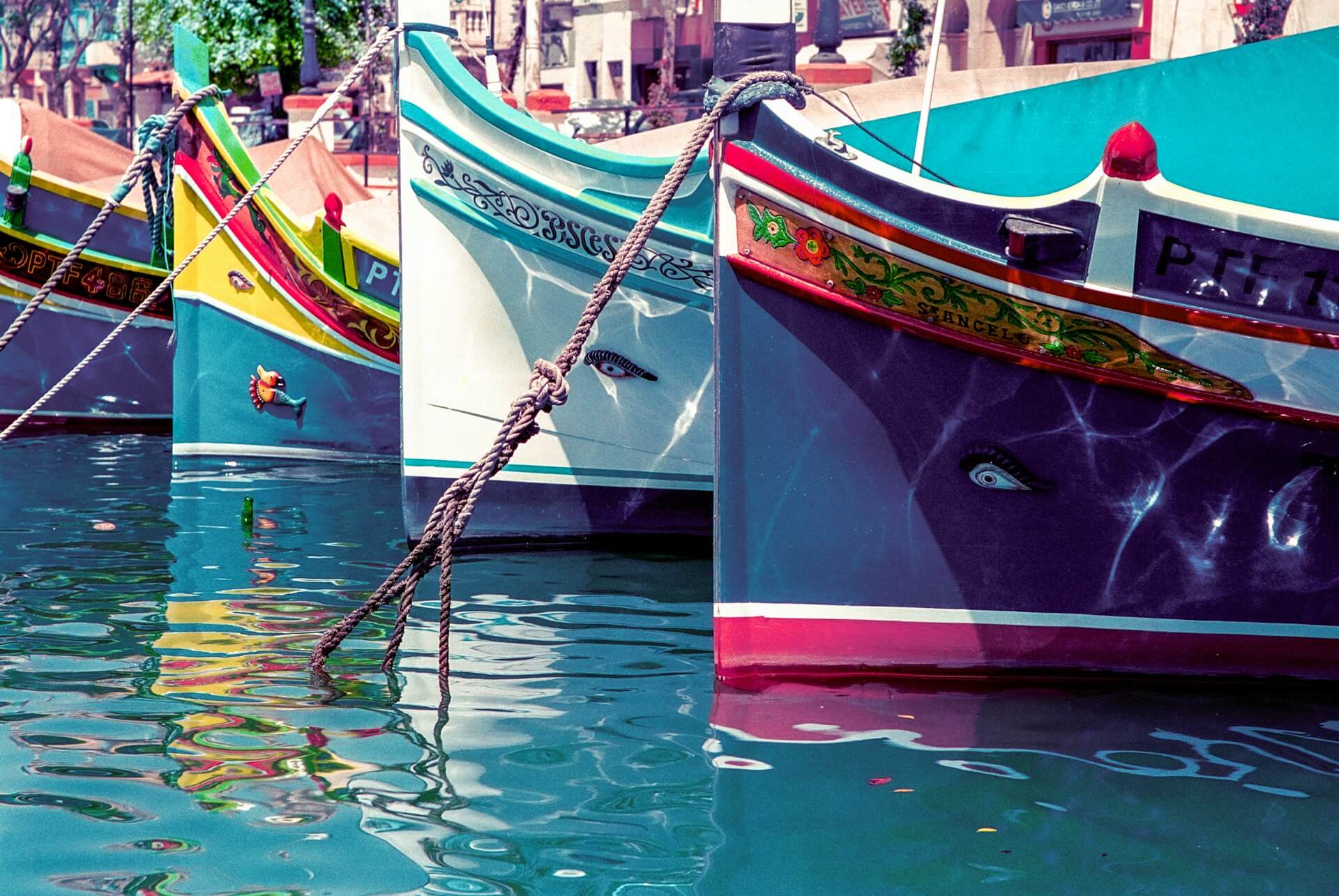
The Ancient Cities of Malta – Mdina and Rabat
These two towns are rich in history with centuries-old buildings, sightseeing, original medieval architecture, and places to take you back in time. The Silent City (Mdina) itself is something to behold and experience. Also of interest is Saint Paul’s Cathedral, which is visible throughout central Malta and is the architectural heart of this elegant city. Visit The Mdina Glass workshop, where you can see skilled glassmakers creating unique and handcrafted pieces. Don’t miss the beautiful sunset from some of the restaurants inside Mdina (I recommend Fontanella Tea Garden and its delicious desserts…yummy).
Do you want to see some rural places and the island’s natural beauty? Then, go for a walk in Howard Gardens, one of Malta’s most significant public gardens between Mdina and Rabat.
For something different, try this sightseeing night tour of important cities in Malta and learn more about their history.
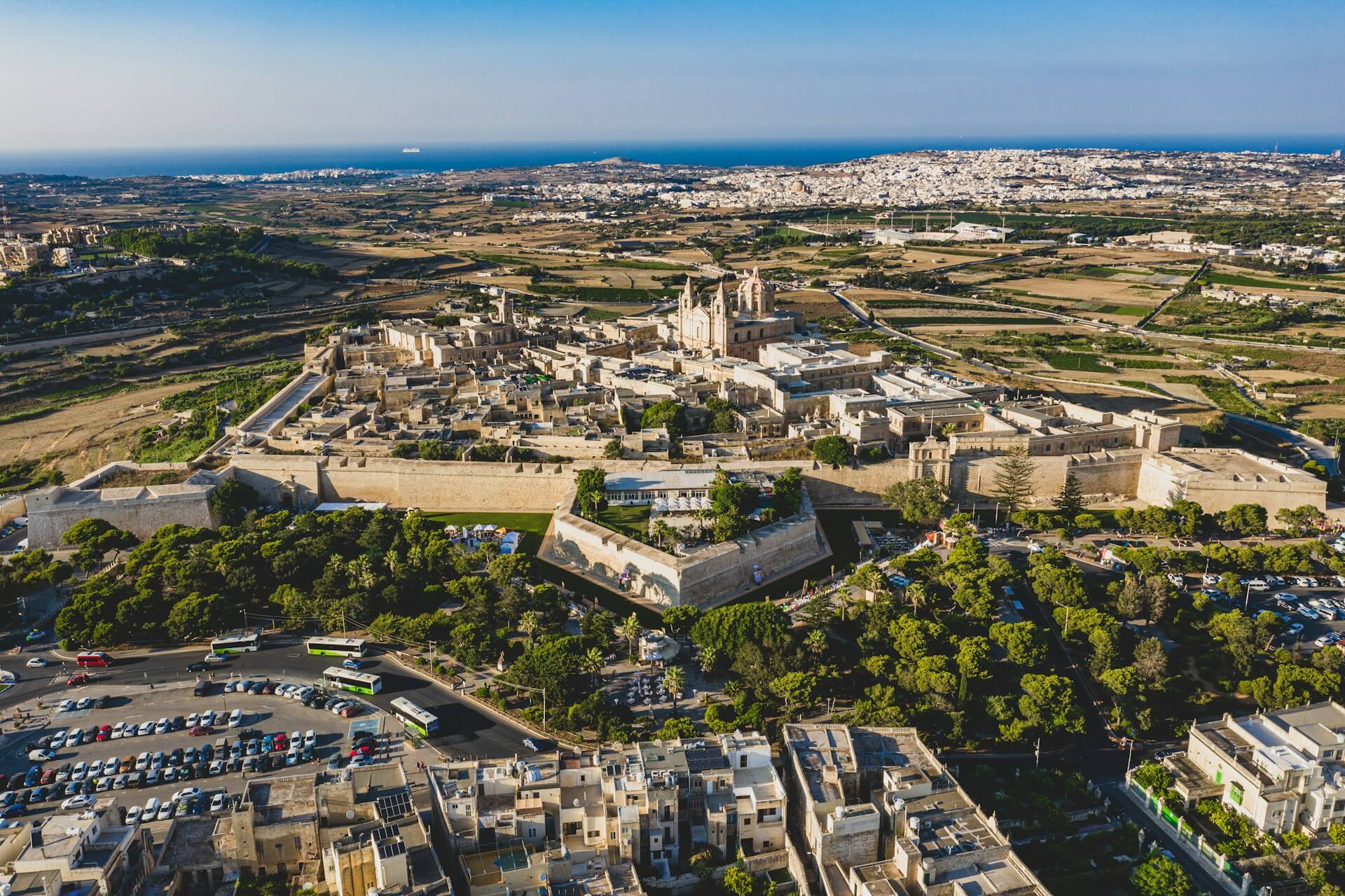
The Three Cities of Malta
In this Malta travel guide, I also want to mention another of my favorite spots on the island. The Three Cities of Malta – Birgu, Senglea, and Bormla, are also called Cottonera – a collective name for these medieval fortified cities, founded by the Knights of the Order of Saint John (16th – 17th century). Their history, tightly related to the Knights’ order and their location overlooking the Grand Harbour, makes them a unique part of Malta. Between the three, you can find some truly spectacular sights. A stroll here allows you to dive into the history of the Three Cities and enjoy the beautiful yacht marina. Or you can just rest in one of the multiple cafeterias, restaurants, and wine bars in the area.
The Party Center – St. Julian’s and Paceville
St. Julian’s is Malta’s go-to area for a modern atmosphere, luxury hotels, and vibrant entertainment venues. Popular among couples and groups seeking good food and nightlife, St. Julian’s also attracts singles and youth groups for its lively Paceville area. After a night of partying, relax at the small sandy beach, St. George’s Bay. It is Malta’s ultimate hotspot for fun and excitement.
Festivals and Celebrations
Malta is a country full of festivals and events throughout the year. Therefore, planning a trip around certain celebrations and festivals could be a great experience. In Malta, the Carnival in Spring and Notte Bianca in Autumn are essential religious and cultural events that I recommend visiting. Learn more about these colorful events around the year so you can choose the right one for you. Or go for a year and see all of them 🙂
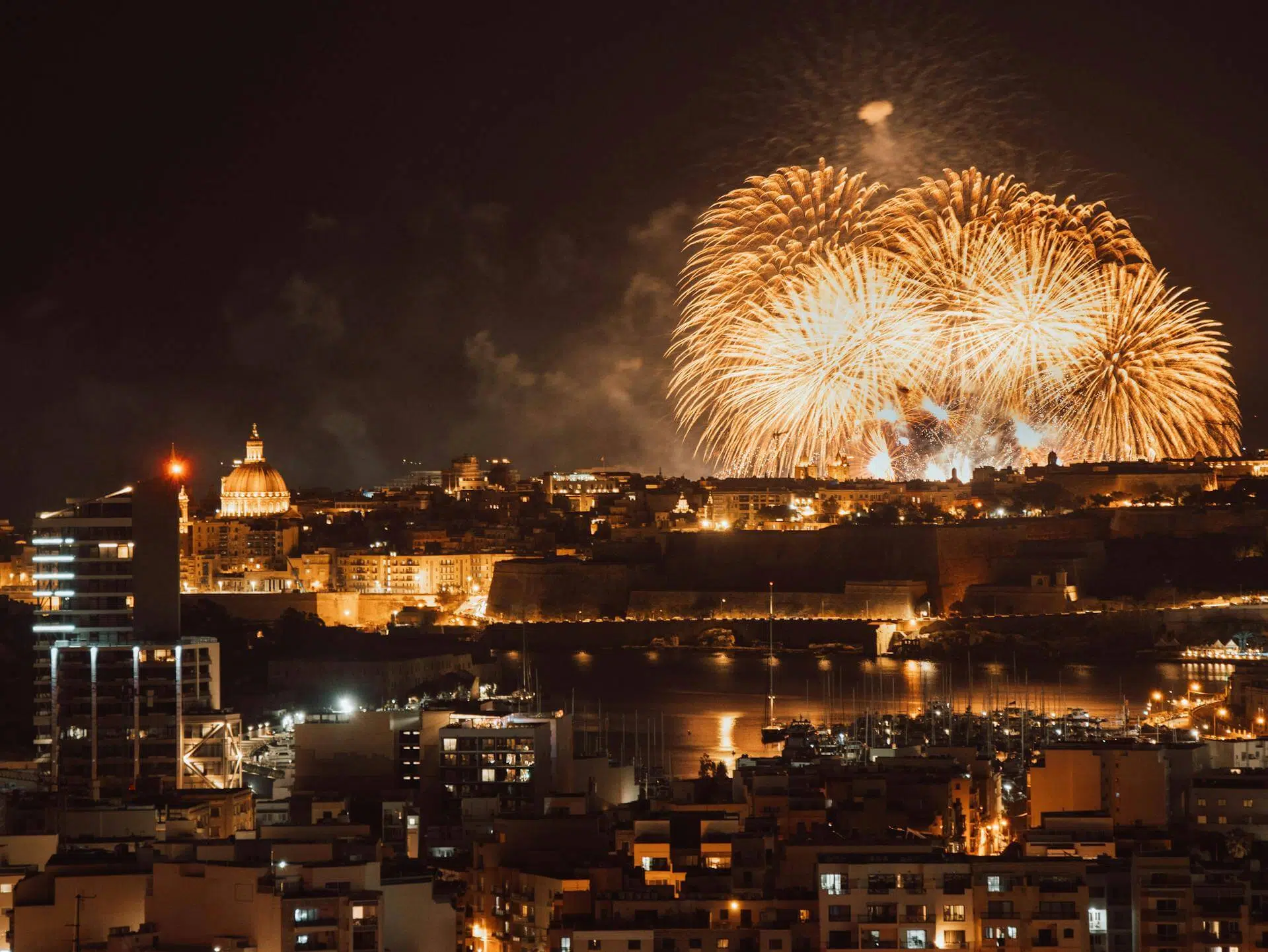
Outdoor Activities and Adventure
Explore the Underwater World
Do you know that Malta is an incredible diving spot? This archipelago has hundreds of reefs, caves, and ancient wrecks. In addition, Malta is well known for its shipwrecks and several shipwrecked submarines around its coast. Here, you can find some impressive underwater geological features. Unfortunately, the famous Azure Window sea arch (captured in “Game of Thrones”) recently collapsed in heavy storms. As a result, you can’t enjoy this beautiful landmark anymore. However, the arch’s submersion still provides a stunning spectacle for thousands of eager divers in the water.
Don’t miss the Blue Grotto in Malta – a breathtaking natural sea cave known for its crystal-clear azure waters and mesmerizing light reflections. Located near the village of Qrendi, this stunning attraction is a must-visit for snorkeling, diving, and boat tours, offering an unforgettable experience of Malta’s coastal beauty.
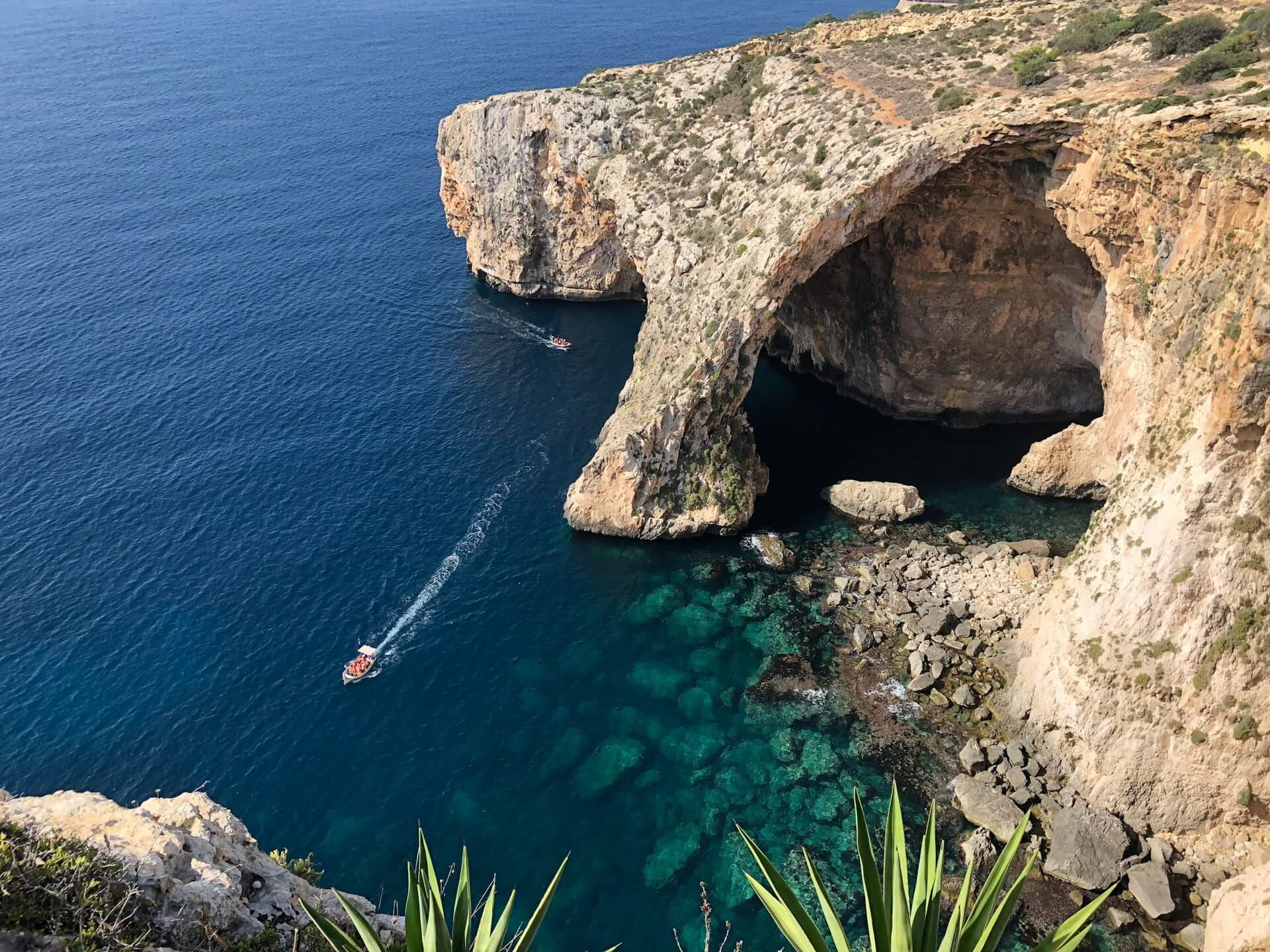
Known for its diverse and rich underwater marine life, Malta is a great place to learn how to scuba dive. Get PADI certified as you go diving around the archipelago. If you are an underwater enthusiast and want to experience some of Malta’s best scuba diving sites, take day trips or do longer excursions around the island. Maybe this scuba diving lesson and guided excursion is just for you.
Explore the Off-the-beaten-path Places in Malta
Beyond popular spots like Valletta and Mdina, discover Malta’s hidden gems: Comino, Mellieha, Xemxija, and Mistra Bay. These locations offer breathtaking views and impressive natural attractions, providing a different perspective of Malta’s beauty.
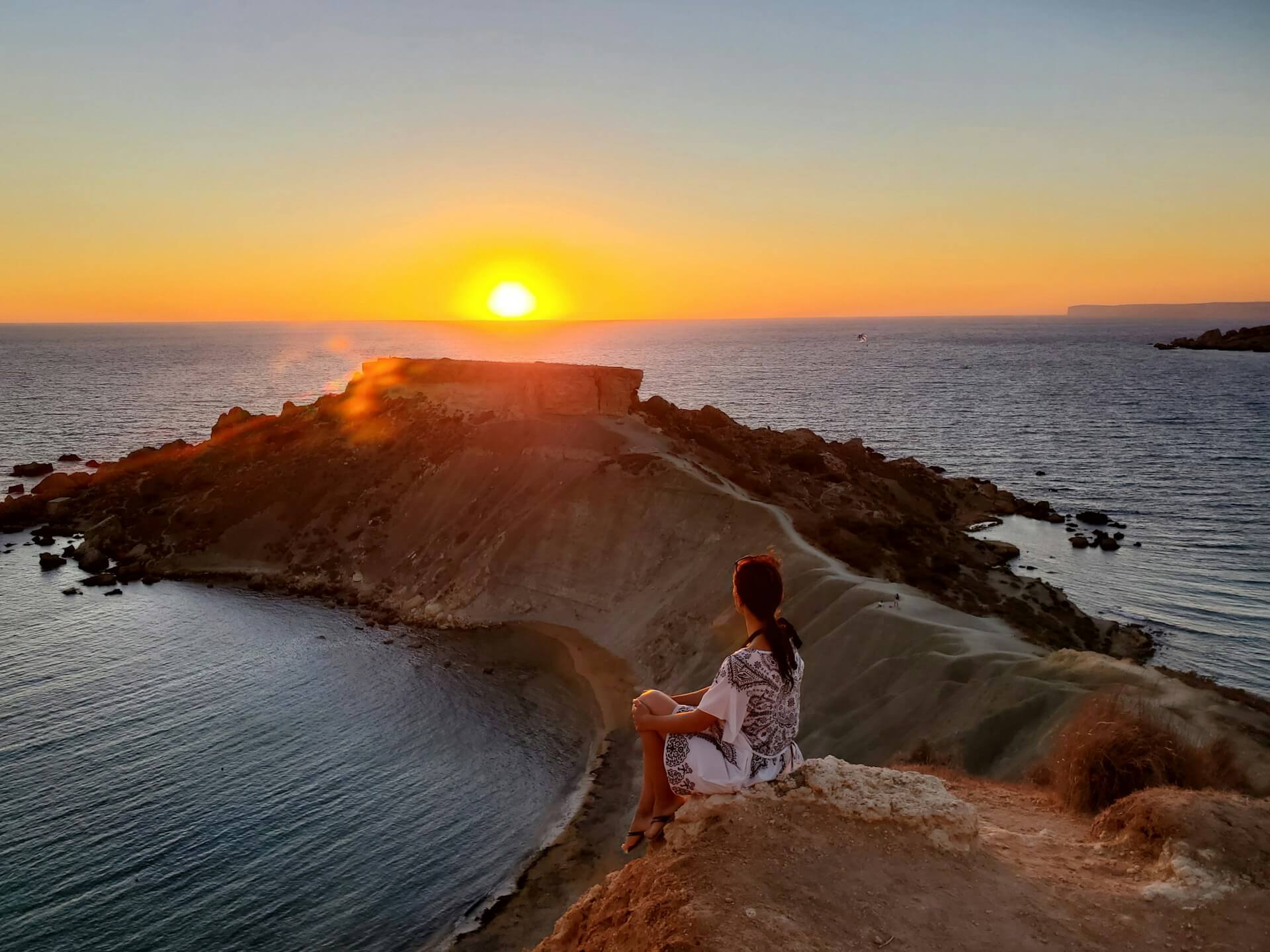
Go Hiking and Camping in Malta
The best time for hiking in Malta is after the first prolonged rain following the hot summer. From November to May, you can see the archipelago’s green fields, which are full of vegetables, fennel, clover, wild iris, etc. You can do excellent day hikes in Mellieha, Dingli, Ghar Lapsi, the North, the various bays, the southern coast, and Delimara Point. Gozo, by itself, is excellent for walking in nature. Don’t miss the tiny Comino, too. It’s ideal for a good day’s hiking in silence, offering fantastic sea views.
For something not so extreme, you can visit San Anton Gardens in Attard, one of Malta’s most beautiful and serene green spaces. These gardens boast a stunning array of exotic plants, flowers, and fountains. Visitors can stroll through the well-manicured pathways, admire the ornate statues, and enjoy the peaceful atmosphere. A visit to San Anton Gardens offers a perfect escape from the hustle and bustle, making it a must-see destination for nature lovers and history enthusiasts alike. You can read more about San Anton Gardens in Malta in our post.
Explore the Islands – Gozo and Comino
A trip to the islands is a must. If you want to explore beautiful untouched islands (above and below waters), add Gozo and Comino to your plan. These places are popular diving destinations and are visited by people for snorkeling day trips. Gozo is the second-largest island known for its rural areas, characterized by fishing, tourism, crafts, and agriculture. On the island, you can find historical sites, forts, incredible panoramas, and one of the archipelago’s best-preserved prehistoric temples, Ggantija. Of course, the beaches here are also impressive and less crowded than on the main island.
Comino provides beautiful landscapes and is an important nature reserve. Famous for its isolation and tranquility, the tiny island is also well known for its bird population. Your trip to Malta won’t be complete without at least a day spent admiring Comino’s crystal waters, especially in the amazing Blue Lagoon in Malta (you can find more information in my blog post). Don’t miss this fantastic spot – one of my favorite places in Malta! Take a look at this Blue Lagoon trip by catamaran and explore the beautiful islands of Malta.
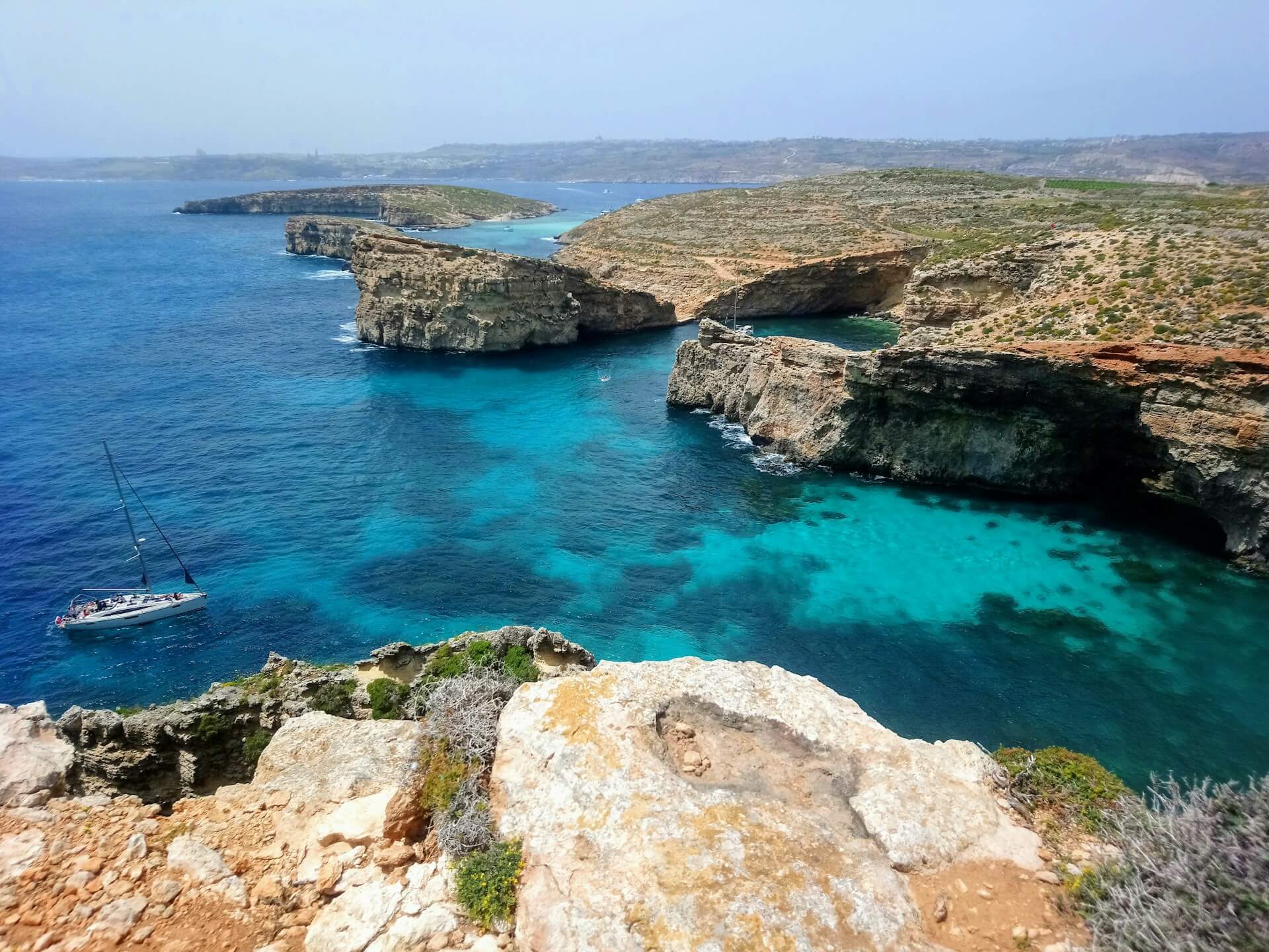
Find the Best Beaches in Malta
Malta, located south of Italy in the Mediterranean, boasts many beaches with crystal-clear waters. While most are rocky, there are some sandy beaches offering various activities. In 2024, 13 beaches across the Maltese Islands were awarded the International Blue Flag eco-label for sustainable development. Here are the best beaches in Malta for your summer holiday – which one will you head to first?
Tours Around Malta
If traveling by yourself isn’t your thing, check out the variety of tours offered across Malta, with details and dates for each trip. Discover the island’s top attractions, activities, and hidden spots through these exciting tours. There are so many exciting things to do in Malta that you can’t miss!
Malta Travel Guide: What to Eat in Malta
Traditional Food You Should Try
Eating in Malta is a rich experience inspired by local produce. It has flavors that are similar to those of neighboring countries. With traditional recipes passed on through the generations, the local Maltese food is something you need to try. As a country surrounded by the sea, fish is traditionally highly used. You should try some of the famous Mediterranean dishes prepared with fresh seafood. But if you prefer beef and pork, you can also find them in a few of the most popular Maltese recipes. Vegans and Vegetarians won’t stay hungry, too. And not to forget – the Maltese know how to prepare tasty pastries and sweets… Yummy!
So, here are the most popular Maltese dishes that you must try:
Pastizzi: Fluffy pastry stuffed with ricotta cheese or pea paste, Malta’s favorite street food.
Ftira: One of my favorite sandwiches for lunch. Ftira is flatly baked, usually portion-sized Maltese bread with a crunchy crusty outside. It’s a popular lunch option, prepared with local ingredients such as olive oil, ripe tomatoes, onions, olives, capers, fresh mint, and basil leaves. You can choose from variations made with tuna, anchovies, bell pepper, Gbejna (Maltese goat cheese), or sausages.
Fenek: In Malta, rabbits are commonly served as a dish. They are usually fried with spaghetti, tomato sauce, and peas as a first course and as a stew (Stuffat Tal-Fenek) as the main dish. The stew is tomato-based and includes vegetables such as onions, garlic, carrots, and potatoes. The meat is so tender that it falls off the bone. You should try it!
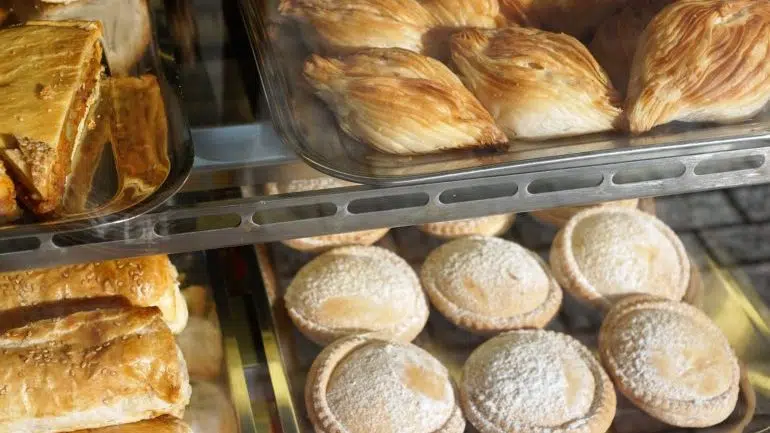
Recommended Food Tours
If you’re a big foodie like me, I recommend going on a food or wine tour during your trip. The local insight of the guides is fantastic, giving you a better understanding of Maltese cuisine. Check out this Valletta Street food and culture walking tour and have a traditional food experience.
Accommodation Options in Malta
Malta offers a variety of accommodations, from luxury hotels and self-catering apartments to farmhouses and guesthouses. Book in advance during the high season (June to September) to secure the best options at reasonable prices. Hotels, along with Airbnb, are the most popular choices. Prices vary depending on the time of booking and location. Villas are rare in Malta, but in Gozo, you can find Malta’s alternative – farmhouses – usually nicely modernized houses with outdoor pools and other amenities.
Movies to Watch (Filmed in Malta)
As well as being famous for its beaches, diving, and architectural sites, Malta is also a popular film location. With dramatic cliffs, stunning landscapes, and ancient buildings, it is a perfect backdrop for many films, particularly those aiming for an old-fashioned feel. The movies “Gladiator” and “Troy” present Malta’s classical charm. At the same time, the “Pirates of the Caribbean” announced a few Maltese landscapes as Caribbean beaches. “Game of Thrones” contains several scenes filmed around the capital Valletta. Fans of GoT also know that Gozo’s famous but recently collapsed Azure Window provided the backdrop for Daenerys Targaryen’s wedding with Kahl Drogo. Popeye Village, also known as Sweethaven Village, is a purpose-built film set village converted into an attraction fun park. In 2020, Jurassic World 3 was filmed in Malta. Do you like these movies? I am a big fan of them (yes, without the last season of “Game of Thrones”).
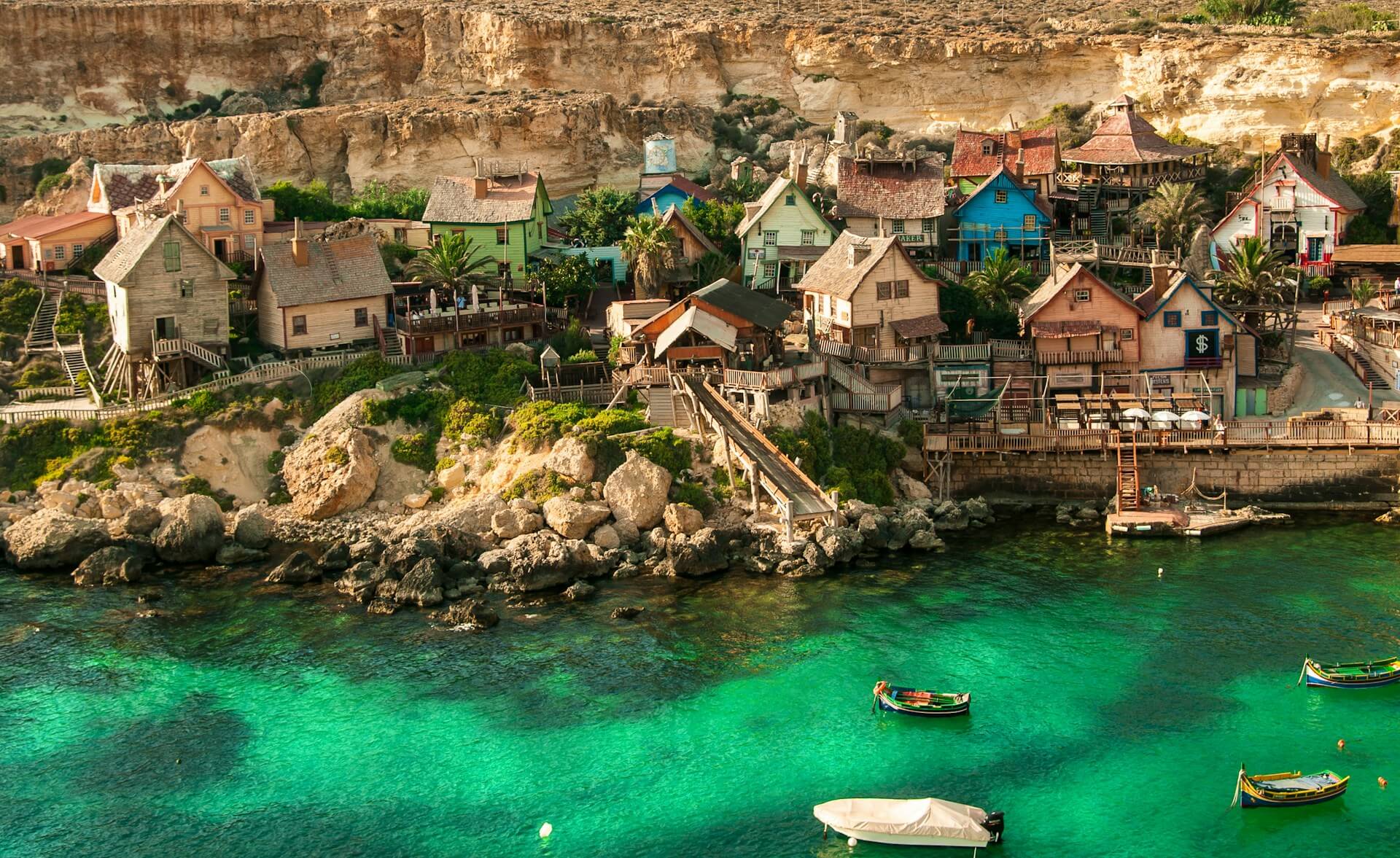
Malta is a captivating destination that offers a perfect blend of history, culture, and natural beauty. From the ancient streets of Valletta to the stunning beaches of Gozo and Comino, there’s something for every traveler. Whether you’re exploring the rich historical sites, indulging in delicious Maltese cuisine, or enjoying the vibrant nightlife, Malta promises an unforgettable experience. With its welcoming atmosphere and diverse attractions, Malta is truly a gem in the Mediterranean. Start planning your adventure to Malta today and discover what this beautiful archipelago offers. I hope this Malta travel guide will help you during this journey.
Latest From Malta
Discover Mdina and Rabat, Malta: Travel Guide and Tips
Mdina and Rabat, two neighboring cities in Malta, are unique destinations that offer a rich blend of history, culture, and scenic beauty. This guide will help you discover Mdina and Rabat and their distinctive features, from the best things to do to the main sights,...
San Anton Gardens – the most beautiful botanical garden in Malta [2024]
The Three Villages are located in the center of Malta and are a perfect place for a walk. One of my favorite places for a relaxing afternoon is the San Anton Gardens – a lovely botanical garden that you have to visit in Malta.
What to See in The Three Cities of Malta [2024]
Let’s look at the map of Malta. You will find a fascinating and full of history part of the island opposite Valletta. These are the Three cities of Malta (Cottonera) – Birgu, Bormla, and Senglea. Despite being less crowded and visited, these cities are proof of history and authentic life.

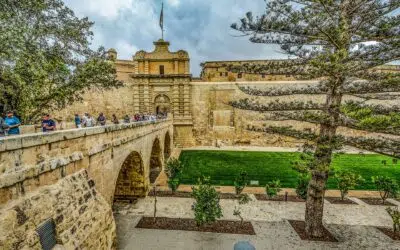
![MALTA TRAVEL GUIDE 3 San Anton Gardens – the most beautiful botanical garden in Malta [2024]](https://yoursundayguide.com/wp-content/uploads/2021/10/San-Anton-Gardens-1-400x250.jpg)
![MALTA TRAVEL GUIDE 4 What to See in The Three Cities of Malta [2024]](https://yoursundayguide.com/wp-content/uploads/2021/09/American-University-of-Malta-scaled-e1631984602288-400x250.jpg)